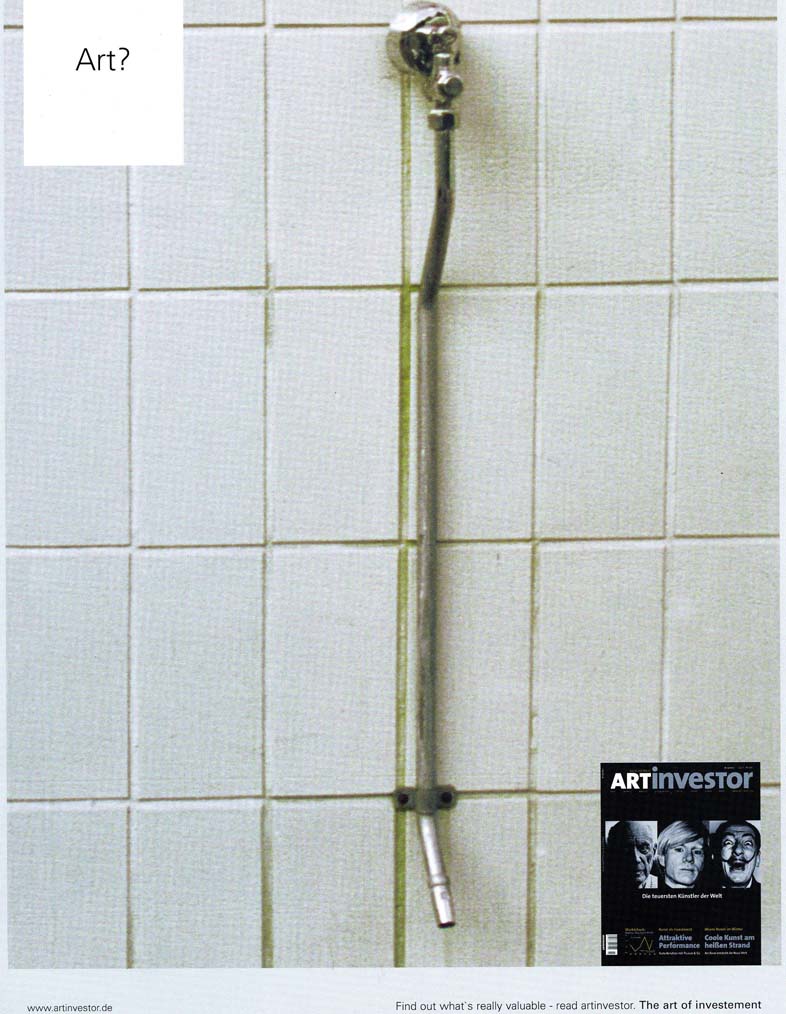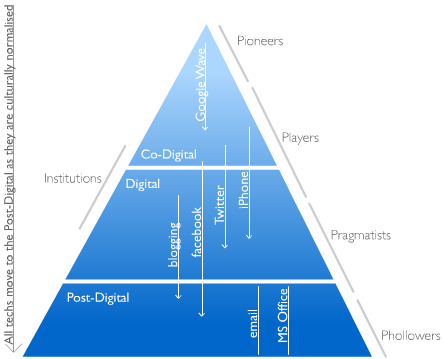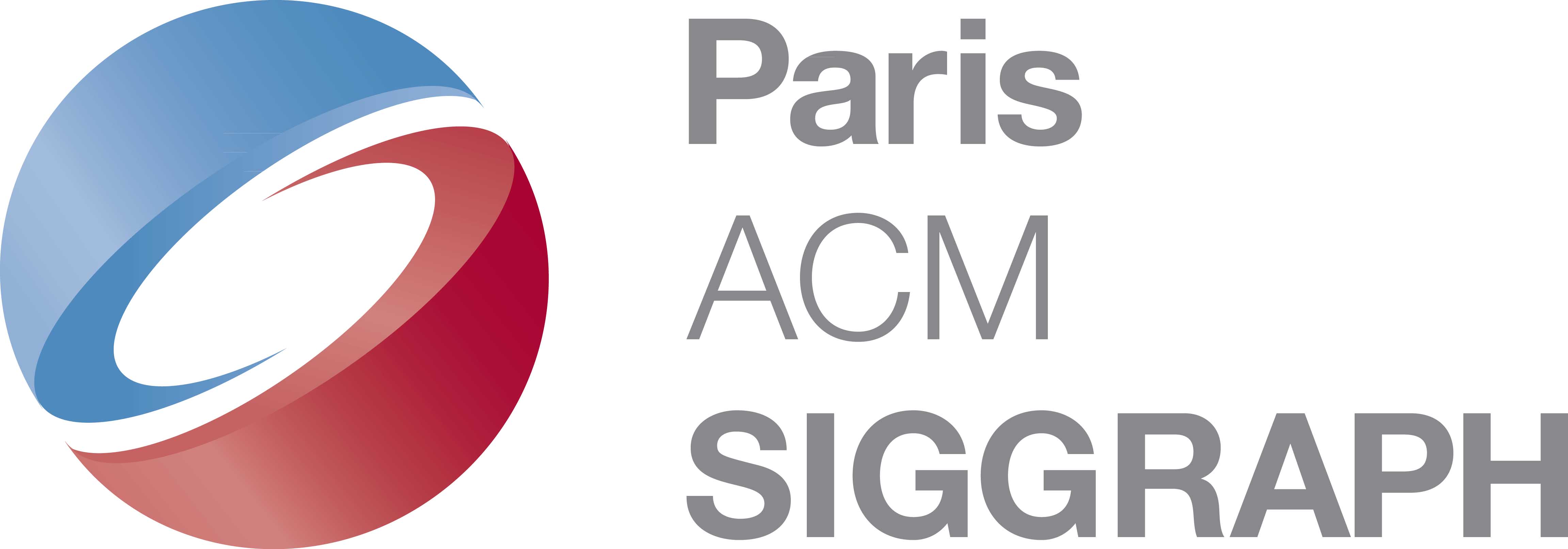Art

Is it art? Only the market can answer. (A commercial Art Inverstor magazine. 2010c. ).
Work in progress
Last revised 9/4/2014. Return to Major concepts. See also artist, aesthetics
1. What does mean "art" in the 2010's ?
2. What does mean "digital art" ?
- A stem of theoretical attempt:
3. The necessary "gap"
4. Style in the gap
1. What does mean "art" in the 2010's?
We could say that
Art and beauty are different topics, even if we limit ourselves to the "liberal arts" and do not take the word in its ancient sense, integrating technology. Art beings are artefacts by definition. But, as seen earlier, we include here the deliberate activities of living beings, which cannot be reduced to pure digital beings. Here also, let us try do de-anthropomorphize.
Art, properly speaking, has no other aim than creation of beauty, in the sense defined in the precedent chapter, and pays a particular attention to originality
2. What does means "digital art"?
Since our world becomes digital in all its facets, is it still useful, or pertinent, to wonder if a work of art, or an artist, is digital? The issue is disputed in the 2010's. And it is not purely philosophical or speculative, since artists (and with them the gallerists, curators and market) have to make options in their career and "artistic discourse".
We suggest defining the digital artist as "an artist who plays with code". This definition is quite restrictive, at a time when every artist uses, to some extent, the digital tools. But it would set clearly the divide between:
- those who consider the computer as a mere tool, and then have no need to don the "digital" label; what counts for them is the result, be it a painting, a music, or a transmedia brand;
- those for whom programming (and/or, for some, hardware digital devices) is the core of their creation; for some, the transcendental curves on their hand calculator was the trigger (e.g. Hugo Verlinde ; for others, the discovery of computing entailed a radical rupture with their precedent artistic activities (e.g. Harold Cohen); and those are really the "digital artists". It's central for algorists of for generative artists.
Some other definitions could be proposed, and we will welcome any proposals.
Nevertheless, let's try to list the pros and cons of any use of "digital art" expression
See a definition and a short list of artists at The Artists website.
In favour of claiming the label "digital art"
Important source of inspiration for some artists.
A specialty of some galleries (Charlot, Denise René, LKFFin Brussels, several ones in New-York )
To play well, you must understand your tools
Important in transmedia
Love a car as a work of art, not as a tool.
The motor analysis of Aziosmanoff
Live coding
Take on'es distance. Control.
Basic for the convergence of arts
Against this label
A ghetto, a risk of ghettoization
A definition is difficult.
What counts is the work itself and its effects on the audience, not the technicalities of the creation.
Artists must not focus on their tools, bun on their intuition, expression, message.
High level digital tend to merge into the analog (HD).
Let oneself be dissolved in body. Pollock. Ubris.

En route for the post-digital era..? An image from Tallblog.
Beyond this label: transdigital art ?
Note the existence of a post-digital art current. Says Wikipedia : an attitude that is more concerned with being human, than with being digital. Kim Cascone is an actgive thinker on this field. Read for instance his paper Transcendigital Imagination: Developing Organs of Subtle Perception.
Personally, I think that, beyond some degree of digitization, we are somehow back to analog. Or, in other words, we can think the universe as a succsssion of layers, - some discrete, digital, formal, systematic, - the others continuoua, analog, informal, chaotic.
We have for instance the physical laws, chaotic below the quantic level, systematic at the atomic level, then chaotic (at least in gases) up to the formal (approximative) laws of thermodynamics (Mariotte).
We have that also in the nervous system, where the neurons transmit flows of digital information, but exchange statistically at the synapse level. We have that in politics, with the chaotic/irrational system of votations between the rationality of each citizen and the rationality of the leaders. (If you admit that there is any rationality at all in poliics, of course).
What would be interesting in the case of digital art, or more globally at the perceptual level, would be based on analyses of phenomena beyond the basically digital levels. For instance, vision systems (Open CV as a basic example of software) can detect formal features (the presence of a human face) from a very large number of pixels, without direct formal relations between these pixels. From this kind of analysis, one could try to draw some first approximative sketches of “trans-digital” perception.
Now let's place to some explorations
3. The necessary gap
Art (as life in general) needs a wide gap between constraints and resources. This gap is multifold.

The technical gap
Technically, that places plastic arts (painting, sculpture) in an eminent role, with the framed canvas as emblematic being of independent art. Music, and now all sorts of multimedia need a little more integration into life, but less than design (from industrial and graphic design to fashion). Architecture has, in all ages, drawn an arch between all these worlds, and had to take into account the function of its constructs.
An important way for the
artist to grant himself free space it to take liberties with the rules:
- The poetic licence is a well studied case. It frees the poet of the normal
language rules, current vocabulary and syntactic rules. Geoffrey Leech [Leech] drills
that spot.
- The representation constraint in painting loses importance after the
photography advent. In Le musée imaginaire , Malraux
writes "Le sujet doit disparaître parce qu'un nouveau sujet
paraît, qui va rejeter tous les autres : la présence dominatrice
du peintre lui-même. Pour que Manet puisse peindre le Portrait de
Clémenceau, il faut qu'il ait résolu d'oser y être tout, et
Clémenceau presque rien".
In digital terms, one could roughly describe the gap as follows: Let the available bit space for the work is (the bits may be pixels, or letters, or notes on a score...). The various constraints on the work (economic, semantic...) demand a minimal bit space. Then, the work can be done only if the available space is greater than the minimal. And so wide the gap, so high the artist's liberty.
If there is no gap, all the resources and all engineering are spent on functionalities, commercial value, etc. Generally, that results in "cheap" and dull beings. Which is of no consequence if this work is a hidden part inside a machine for instance, but is regrettable for housing, where human people have to live in deprivation of beauty.
Nevertheless, in some cases, a particular kind of beauty may emerge from a perfect adaptation of the being to its function. That is perhaps because, even within the minimal space, various layouts (let us say permutations) are still possible, and among those aesthetic criteria may find their place. Would it be only some kind of admiration for the cleverness of the engineer.
(Of course, such a coarse model must be a taken as a mere sketch).
Music
Music performance, as an example, consists, starting from the score, to divide it by its typographical peculiarities, then to process it by combination with the interpreter own mood and genius (in particular, in what he tries to understand the composer intentions), then to multiply times instrument specificities.
In music, temporality play a sophisticated (multilevel) role, from the pitch frequency of each note up to the date and time of the performance, through bars, score parts, parts of a concert (with applauding times and pauses..). But, in principle, there are no loops (but perhaps the basically cyclical nature of the instrument).
The above description is not digital globally, but becomes more and more so. Any disk or CD or Internet music player does the same thing basically, of course without "interpretation" proper, though some efforts have been made in this way ( to be checked).
In music, the simplest digitizing consists in the sampling of an analogic signal: acquire its analogy value at regular intervals (sampling rate) and convert this value into several bits (8 or 16, for instance). That suffices for the main forms of processing.
We can go further by aligning the signal on a series of predetermined frequencies (notes scales), or of timbres, or by considering it as the expression of a typical instrument or set of instruments. That what the Midi standard does.
Still further, we can "multiply" a musical theme by ("times") a selected composition structure. It is then possible to compose "automatically" some new scores.
4. Style in the gap
The first use of the gap is of course to apply aesthetic criteria (proportions, symmetries... structures explicitly shown or hidden) even when they contradict functional needs or habits. The easy way is to decorate the beings on non-functional part. The dream is to find the ideal point where beauty and functionality converge. That may imply a re-thinking of the being from its most basis aims and components. In beings of art like a painting, deep aesthetic aims may demand to sacrifice superficial ones, to let being prettiness to reach beauty, if not sublime.
Here, our description of DU beings a basis for a model of "style".
At the core of the creation process, the aims and constraints of the work to be done have been analyzed by the system. Then takes place the generative process, using the gap to mate these data with the aesthetic rules, and beyond them, with the personality of the artist and the "style" he is practicing at that moment.
Some examples:
- In genomics, Christian Gautier, scientist in CNRS, said (Asti-Hebdo no 19, 29/1/2001) : "The common theme leading our research is the writing style specific to each genome. The style possibility stems out of the fact that the building of a given protein may be triggered by several different messages (codon sequence).
- In Oscar Wilde's the picture of Dorian Gray, the painter says he will not exhibit the canvas: "I have put too much of me into it... every portrait that is painted with feeling is a portrait of the artist, not of the sitter. The sitter is merely the accident, the occasion".
A major aspect of cubism
(and particularly of Picasso) is to use the simplification of drawing and the
available space to combine several views of the same being.
- We once heard a wine maker in Mercurey say that a progress of complexity of
wine afforded to offer a perfectly typical Mercurey with the brand's style.
- Though they are more functional than artistic beings, geographical maps are
strongly styled, and very different from "natural" aerial
photographs. The cartographer selects only what is pertinent, sacrificing in
particular local textures and natural colors. Then he can stress the pertinent
objects (roads, building) and also add non-physical features as administrative
borders. He will even, sometimes, sacrifice some details or some geographical
exactitude in order to place the toponymy. Hence, the style of different map
makers, would it be only by character fonts.
- Hyper-realism is a way of using high resolution image to go beyond normal
photographic images and get out if effects of style.
- It is known in programming teams that, even in purely functional works
(business applications for instance), it is frequently possible to recognize
who has written a given part (for instance, with the choice of variable names).
- Page setting and typographic character design is well known. In occidental
languages, 6 bits are enough to identify the upper and lowercase letters,
figures and punctuation marks. We then would have a zero stylization with six
black and white rectangles, 3 columns of 2 rows. But these extreme solution is
not really readable by humans. It is readable, but unpleasant with a 7.5
matrix. Everything beyond that may be considered as "style". In
software like Word, for Times in 12 font size, the matrix is of 20 pixels
height and an average of ten in width. Then the margin is 200/35, one sixth. At
an extreme, an illuminated letter in a Middle-Ages manuscript may bring several
megapixels, with a 100 000 margin. Of course, at such a level, the "style"
concept is largely overspassed...
5. Machine as an artist
A new opened progressively: to find novelty no longer in the spectacle of the world or in the exploration of unconscious, but to transfer the creative power itself to various kinds of machines.
The idea found its way first in music, of which the digital nature gave easier opportunities. The basic idea is that of automatic composition, with use of random draws, has found expressions since... The idea is present, for instance in Jules Verne's novel The Day of an American Journalist in 2889 "...what a charm he found in the works of our greatest masters, based, as everybody knows, on a series of delicious harmonico-algebraic formulae! ". It progressed then up to the serial music.
In painting, the idea was
formulated in the 1930's by Schillinger, with his project of a
"graphomaton". Tinguely built some painting machines at the end of
the 1950's, but in his derisive way. Then computers brought the practical way
of transforming algorithms into pictures, and a lot have been done, first
nearly as a side product of scientific computing (simulation fluid images, for
instance), then in a explicitly artistic dynamics. Names as Charles Csuri and
Harold Cohen stay as landmarks in the road. In ... Hébert wrought the
"algorist" word, and the move is still active, wih the creation of
the association Les Algoristes in
That sets out a lot of artistic and philosophical problems. And one specially: it tends to focus the interest of art creativity in the machine creating process more than on the works by themselves.
As long as art produces work for humans, artistic machines will have to work within the limits of their appreciative capabilities. Then, the real progress will come when superior machine artists will work for superior machine seers, able to resonate fully with their innovations.
6. Roxame and Primeval
Is there a "Roxame
style" ? Rather a meta-style, due to the limits. Beacause here there is no
place for a long reuse of a "manner" (Toffoli, Buffet, Vlaminck,
Doutreleau...) since, once a strategy is well trimmed, it is possible to make
as many works out of it as one wants, taking the variety not only from random
but from external documents. And, when Roxame is stopped by some limit, one can
tray to out pass it (e.g. if it is too stiff and skinny, fuzz functions may be
added).
With Roxame : attempt a style quantification on LineTo. I have tried with step/hubris.
I should check than on styles other than 0, with 0 hubris, we find back an
equivalent of 0 styles. Actually, to get a line as straight as possible, there
is always some effort.
With Roxame : then a good thing would be to go through a lesser resolution and poorer palette ( Done in 2007 with the image at difgen 100 000). The reduction phase should be managed as smartly as possible, possibly with a meaning conservation/stressing aim. The enrichment must also add something meaningful.
In the traditional plastic arts, these choices (selection enrichment) are defined by the available technologies (BW photo, watercolour, pigment set...) and the artist abilities. Roxame, within its own freedom space, may have an wider determination, and moreover more isotropic.
Roxame as an artist: the two criteria: resonance (with normal people) and originality (surprise to me).
Primeval. An experiment in genetics. The model has been given by Bret.
9 Varia
Art as a decisional flow
Some references
< Art and the Mind, by Bullot, N. J., Ludwig, P. (Advisory editors). Smith, B. (Editor). (2003, October).The Monist, An International Quarterly Journal of General Philosophical Inquiry (86:4).
DICCAN'S PARTNERS:

Paris ACM Siggraph, the French chapter of ACM Siggraph, worldwide non-profit organization of computer graphics.
